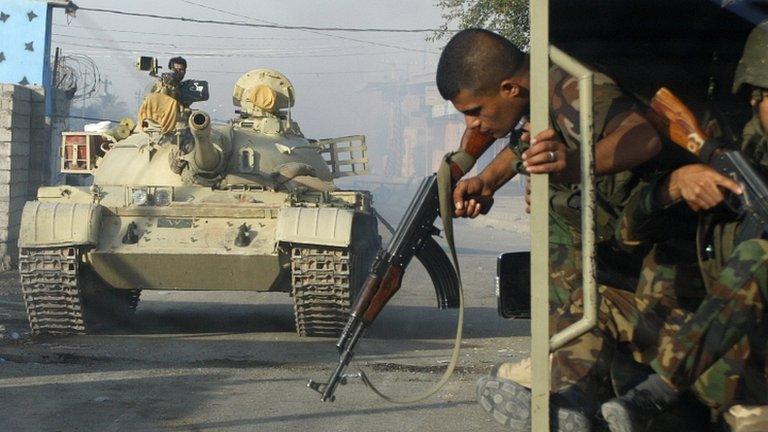Profile: Who are the Peshmerga?
- Published

The Kurdish Peshmerga, many of them veterans, are spearheading the defence against IS militants in Iraq
The Peshmerga, whose name translates as "those who face death", are the Kurdish fighters in northern Iraq. In recent weeks, they have been fighting Islamist militants of the Islamic State - formerly known as Isis - who seized large swathes of territory in the north.
Now thought to number around 190,000, the Peshmerga have their roots in groups of loosely organised tribal border guards in the late 1800s, but were formally organised as the national fighting force of the Kurdish people after the fall of the Ottoman Empire in the wake of World War One.
As the Kurdish nationalist movement grew, so too did the identity of the Peshmerga as a key part of Kurdish culture - evolving from tribal defenders to nationalist fighters for an independent Kurdish state.
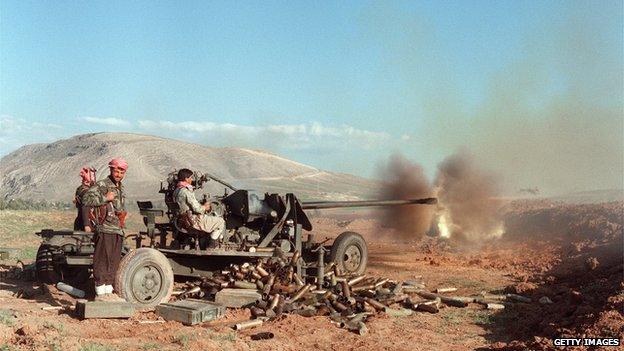
Following the 1991 uprisings in Iraq, the Peshmerga succeeded in pushing out Iraqi forces from the north
.jpg)
In 1992 the rival Kurdish KDP and PUK factions established the semi-autonomous Kurdistan Regional Government
When did the Peshmerga force begin?
The modern-day Peshmerga are mostly veterans from the fighting against Iraqi government forces, and from infighting between Kurdish factions.
After World War One the region of Kurdistan, previously a strategic buffer area between the Ottoman and Persian empires, began to see itself as one of several nation states newly created in the region, carved out from the remains of the Ottoman Empire - Iraq, Syria and Turkey.
The regional disarray left a power vacuum, and Kurds began vying for an independent state of their own.
Disputed areas in Iraq's Kurdish region

The Iran-Iraq War
By the 1970s, Kurds had become divided between two factions controlling the north and south of Iraqi Kurdistan. However, they both soon came into conflict against the Iraqi state - rival Kurdish tribes united and the movement for independence was strengthened.
By the time of the Iran-Iraq war in the 1980s the Peshmerga had developed into an effective guerrilla fighting force.
Many Kurdish fighters were defectors from Saddam Hussein's Iraqi army, and when the Peshmerga united across tribes to claim territory in Iraqi Kurdistan, Saddam Hussein decided to act.
Halabja attack of 1988
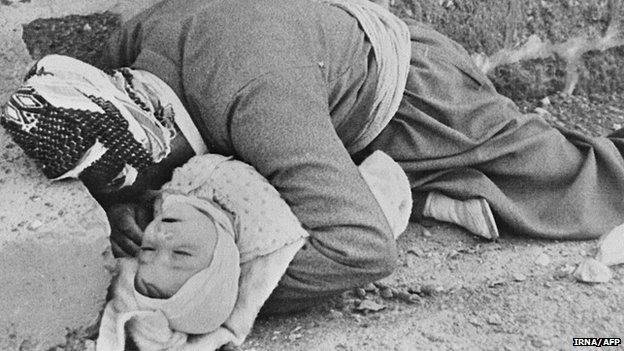
The 1988 Halabja attack became known as the worst chemical weapons attack in modern history
Some Kurdish fighters had previously fought alongside Saddam Hussein's forces in the war against Iran, but many Peshmerga then allied with Iranian troops in order to bring more areas in Iraqi Kurdistan under their control.
Saddam Hussein then began a campaign of collective punishment known as the "Anfal" against the Kurds, for fighting with Iranian forces and for seeking more territory.
The most notorious event in the Anfal campaign was the 1988 Halabja chemical weapons attack, external, in southern Kurdistan. An estimated 5,000 people, mostly women and children, were killed when Iraqi jets dropped poison gas, external on the town. Thousands of inhabitants choked on a mixture of mustard gas and nerve agents.
As a result, the Peshmerga were forced to cease operations as more than a million Kurds were displaced, and hundreds of thousands killed throughout the Anfal campaign.
Conflict with Saddam
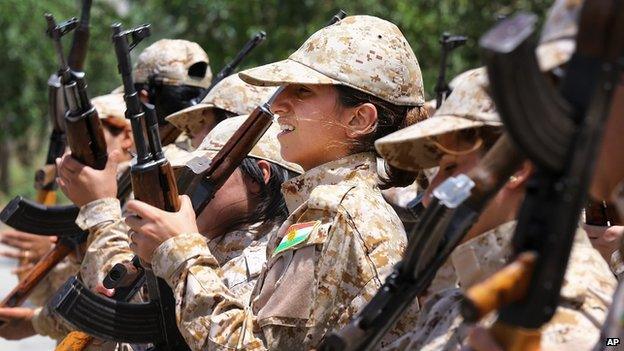
Elite units of female Peshmerga fighters have been trained by SWAT teams to fight IS militants in Iraq
Throughout the 1990s and in the aftermath of the Anfal campaign, despite huge losses the Peshmerga continued to battle Iraqi forces against the backdrop of the First Gulf War and Operation Desert Storm.
However, internal tensions continued to build and turned to war between the two rival Kurdish factions, the Kurdistan Democratic Party (KDP) led by Massoud Barzani, son of the Kurdish nationalist leader Mustafa Barzani and the Patriotic Union of Kurdistan (PUK) led by Jalal Talabani, who would eventually become Iraqi president.
During this period, female fighters were also incorporated into the Peshmerga to bolster the forces' numbers in the fight against Saddam Hussein.
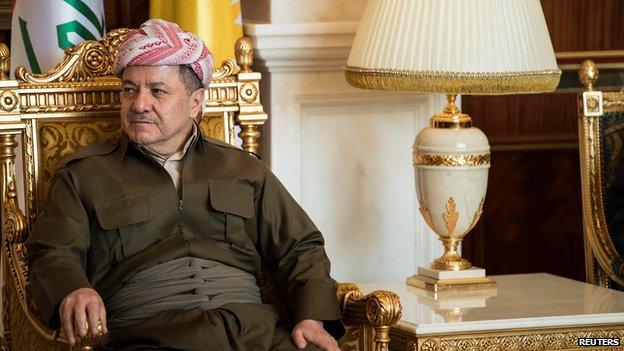
Kurdistan Regional Government President Massoud Barzani led the KDP, succeeding his father Mustafa Barzani

Jalal Talabani of the PUK, became the sixth President of Iraq, and the first Kurd to hold that office
Co-operation with the CIA
After reconciliation between the two opposing Kurdish factions was sealed by the 1998 Washington Agreement, the US Special Forces deployed CIA agents to Kurdistan, the start of a relationship of co-operation between the Peshmerga and the US, both pitted against Saddam Hussein's Iraqi government. The role of the Peshmerga was key in the eventual toppling of Saddam Hussein., external
After his Baathist government was dismantled, US forces continued to work with the Peshmerga, training fighters and holding joint operations throughout the area. When the PUK's Jalal Talabani was elected as the sixth president of Iraq, and the KDP's Massoud Barzani was elected president of Iraqi Kurdistan, Kurdish hopes for self-determination continued to grow.
- Published16 July 2014
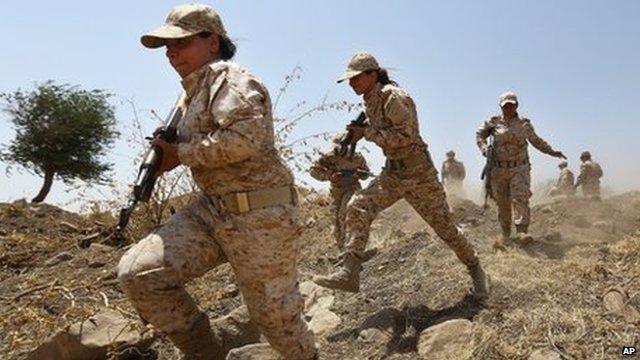
- Published12 June 2014
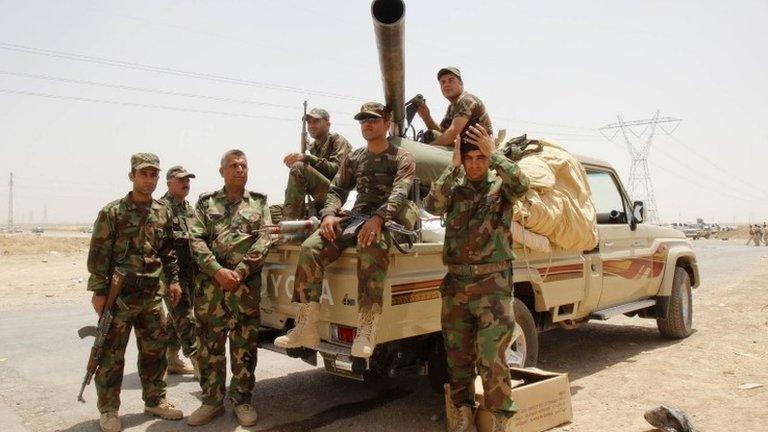
- Published4 August 2014
